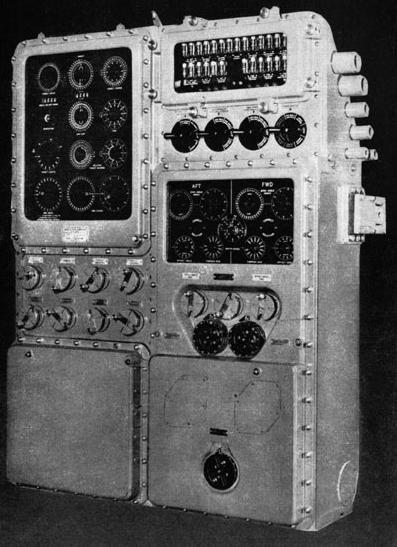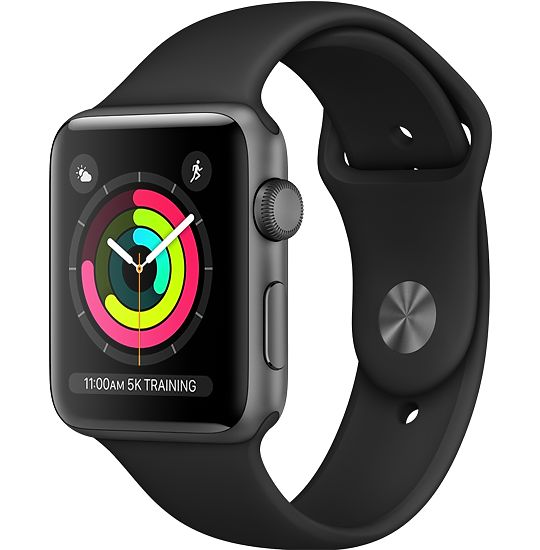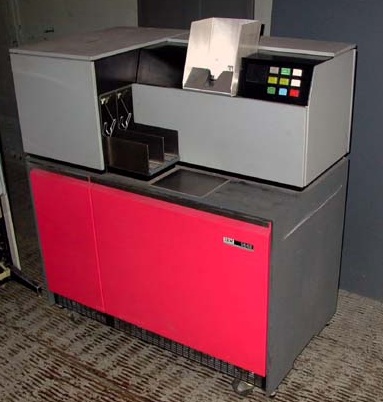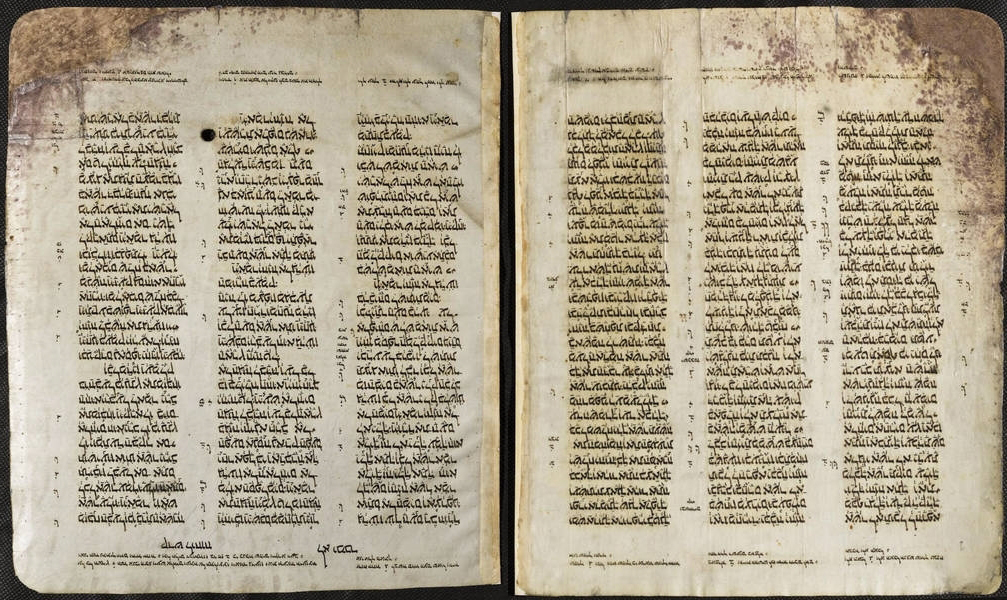Computers are like magic boxes that reveal various extraordinary features and amazingly change our lives. Nowadays, we use laptops, mobile phones and the other fresh even smarter devices every day, which makes that we find they are our essential partners and even friends. Perhaps we have been used to using them, but do you give attention to how we operate them and how the ways of interaction changed in history? In case you have no clear idea about that, this article will introduce a brief history of Human-Computer Interaction (HCI).
As a type of interactive tool, computer could be operated to input information by users, as well as could reflect and feedback to people. Interacting with computer, like human’s conversation, we question to others and could always get certain response. If I ask someone what the weather is like tomorrow, he maybe answer sunny or I dunno. The interaction is also a kind of conversation whose methods don’t limit in speech between human and computers. It can let computer understand what you want and what it should do. So the history of interaction is a history of methods of conversation between us and computers as well. I’ll talk about how we operate computers from the birth of them to future possibilities. Meanwhile, I’ll also describe the changes on computers outputting information, showing result and responding to us these decades. Finally, I’ll list some changes of ways that human communicate to each other influenced by HCI and networks.
Input
The era of mechanical operation
At the age of computer beginning, it was regarded as a big, complex calculating machine. Therefore, people operated computers as common machine. While Some of these mechanical operations are obsolete, a lot of them still remained to current day.
- Real Button/Switch I believe that we hardly find a digital device without a button. Although some buttons on monitors are replaced by touchable buttons, buttons are still exist. Whatever it is a mechanical button or a touchable button, we consider both of them to real button relative to the virtual button on GUI. To a digital device, we need at least one button to turn on or boot it. I’m not certainly to tell you the specific time when the first button or switch on computer was produced, but it must be the one of oldest methods of HCI. A button could offer three types of basic operation - press, long press, double press. There are also some buttons, like switches, that have two status - pushed or depressed. We could see all these ways of operation on an iPhone, such as power button in default setting - press is locking/unlocking screen, long press is popping the Siri, double press is showing the wallet.
 Of course, combinations of buttons could bring more operations, like power button plus sound louder button is taking a screenshot on iPhone. This operation method is very user friendly, since people can easily find out the location of button by trying to grope, and get physical pressing feedback when push it, which makes users to feel safe in mind and trust it. Even in some problems with device, real button is more reliable, for its principle is simple and hardly happens bug. Thus, we often long press the power button to restart, while our smart device doesn’t work.
Of course, combinations of buttons could bring more operations, like power button plus sound louder button is taking a screenshot on iPhone. This operation method is very user friendly, since people can easily find out the location of button by trying to grope, and get physical pressing feedback when push it, which makes users to feel safe in mind and trust it. Even in some problems with device, real button is more reliable, for its principle is simple and hardly happens bug. Thus, we often long press the power button to restart, while our smart device doesn’t work. - Knob
 The Torpedo Computer was an early electromechanical analog computer during World War II. US Navy controlled it by the knobs, like radio’s, on its surface and side. Twisting them, you can change the data which you want to input. I’m not sure whether the inspiration comes from knob of watch on side that is used for adjusting time. Obviously, this classical design is still applied on consumer electronics in the digital era, such as Apple Watch’s digital crown.
The Torpedo Computer was an early electromechanical analog computer during World War II. US Navy controlled it by the knobs, like radio’s, on its surface and side. Twisting them, you can change the data which you want to input. I’m not sure whether the inspiration comes from knob of watch on side that is used for adjusting time. Obviously, this classical design is still applied on consumer electronics in the digital era, such as Apple Watch’s digital crown.  It’s simple and fluent, when we are accurately adjusting numbers and data or selecting an item on a list.
It’s simple and fluent, when we are accurately adjusting numbers and data or selecting an item on a list. - Punch Card I don’t view data storage devices, such as tape, floppy and flash disk, as kinds of HCI tools, since those devices aren’t directly operated to control or command computers, but computers are just controlled via other tools operated by human to read or write them. However, punch card is different, in a sense, is a tool which can directly show input/output data of computer. Although the earliest punched card was invented in 1700s, it become ubiquitous in computer field from 1970s. It could be read by computer punched card readers and directly recognised by computer. It has not been applied in the computer field now, but many voting systems still use it.

- Keyboard A computer keyboard is a device which uses an arrangement of buttons or keys to act as mechanical levers or electronic switch. Before it was used for computer, you also can find these shape-style things on piano, typewriter and so on. The early keyboard device were used in stock market in 1870s. The development of the earliest computers incorporated electric typewriter keyboards was as a keypunch to write punched card in ENIAC in 1940s. The keyboard remained the primary, most integrated computer peripheral well into the era of personal computing until the introduction of the mouse as a consumer device in 1984. Fortunately, keyboards are widely accepted by average people, not like punch card only for engineers. Typewriting plays the vital role in HCI to this day. It is still the best and most efficient way of editing words. If there isn’t keyboard, I hardly image that I would like writing programming code, even words. Keyboard shortcuts are so far the best and fast ways of command in a lot of situations, though people have used mouse so many years. To text, the pen and paper - or parchment etc. - are the unique interactive objects in the past. Human wrote copies of Bible, letters, poems, books with hands in a long time before printing invented. It is quite a hard work, for writers are very easy to fell tired and have to be careful on the scribal norm. The handwritten text consisted of words or character, like a work of art, not only reveals the information of content, but also shows its writer’s mental expression. This kind of expression builds on the force, the fonts and the control of strokes of pen.
 However, the keyboard changed the all of things - text is not an object of pen and paper longer, it could only focus on the information that text should have expressed. The interaction between human and computer or human and human could become pure communication via virtual text because of keyboard. It liberates us from the heavy manual labor, and makes writing become convenient, flexible, fast and more people love to create. We can swift input a mass of words, and be easy to edit or correct them. I couldn’t forget how exciting I am, when I learnt using Ctrl + C and Ctrl + V. In this age, I could write articles, code programme, create poems and post blogs everywhere with keyboard. The common people start to have the free will of using word to express themselves, breaks through the constraint from press, religious leaders, cultural authorities and so-called sages. Besides, keyboard produced more possibilities of control methods for computer, especially on game. Such many keys in keyboard let the games have more operational ways. Players always practise complex operations of keyboard in some RTS game, such as professional players are able to hit over 300 actions per minute (2APM) with keyboard on Starcraft II. To these game masters, keyboard has acted as important as ancient worriers’ sword, and is a necessary bridge between them and computer games. It is undoubtable that the relation between human and computer has becoming close since the birth of keyboard. Keyboards have different shapes, connected method and design to meet various users’ need. Based on switch, Mechanical, Membrane, Conductive Rubber, Capacitives provide totally different press feelings. Although QWERTY is the most popular layout, others language users could enjoy more proper layout. Moreover, for Windows, for Mac; in cable, wireless; embedded, independent; Keypadless, full-keyboard, all of them offer flexible diversity of choose for users.
However, the keyboard changed the all of things - text is not an object of pen and paper longer, it could only focus on the information that text should have expressed. The interaction between human and computer or human and human could become pure communication via virtual text because of keyboard. It liberates us from the heavy manual labor, and makes writing become convenient, flexible, fast and more people love to create. We can swift input a mass of words, and be easy to edit or correct them. I couldn’t forget how exciting I am, when I learnt using Ctrl + C and Ctrl + V. In this age, I could write articles, code programme, create poems and post blogs everywhere with keyboard. The common people start to have the free will of using word to express themselves, breaks through the constraint from press, religious leaders, cultural authorities and so-called sages. Besides, keyboard produced more possibilities of control methods for computer, especially on game. Such many keys in keyboard let the games have more operational ways. Players always practise complex operations of keyboard in some RTS game, such as professional players are able to hit over 300 actions per minute (2APM) with keyboard on Starcraft II. To these game masters, keyboard has acted as important as ancient worriers’ sword, and is a necessary bridge between them and computer games. It is undoubtable that the relation between human and computer has becoming close since the birth of keyboard. Keyboards have different shapes, connected method and design to meet various users’ need. Based on switch, Mechanical, Membrane, Conductive Rubber, Capacitives provide totally different press feelings. Although QWERTY is the most popular layout, others language users could enjoy more proper layout. Moreover, for Windows, for Mac; in cable, wireless; embedded, independent; Keypadless, full-keyboard, all of them offer flexible diversity of choose for users.  Despite as an outstanding interactive device of computer, it brought some difficulty for rookie. Due to keyboard carrying on lots of typewriter’s features, the beginners have to pay some learning cost on it. Let ‘s recall that time when we began to learning how to typewrite with a keyboard, you might be confused by the complex keys layout and the wired names of function buttons. You might not know why the alphabet list is not in sequence, and only had to remember it and practised to type again and again. Perhaps, one day, while you are told that the strange layout aimed to avoid some mechanical problem in the era of typewriter, these reasons have not mattered, since you have mastered typing it. People consider computer with a keyboard as a machine, though the keyboard has reformed the operational methods for computer, because we need to learn, to adapt to this certain layout, to remember kinds of combinations of shortcuts. So, if you want to make friend with computer with keyboard, a typewriting lesson is your part of journey.
Despite as an outstanding interactive device of computer, it brought some difficulty for rookie. Due to keyboard carrying on lots of typewriter’s features, the beginners have to pay some learning cost on it. Let ‘s recall that time when we began to learning how to typewrite with a keyboard, you might be confused by the complex keys layout and the wired names of function buttons. You might not know why the alphabet list is not in sequence, and only had to remember it and practised to type again and again. Perhaps, one day, while you are told that the strange layout aimed to avoid some mechanical problem in the era of typewriter, these reasons have not mattered, since you have mastered typing it. People consider computer with a keyboard as a machine, though the keyboard has reformed the operational methods for computer, because we need to learn, to adapt to this certain layout, to remember kinds of combinations of shortcuts. So, if you want to make friend with computer with keyboard, a typewriting lesson is your part of journey.
//TODO
- Mouse
- Remote Controller
- Joy Stick
- Touchable Board
The age of smart operation
The time of brain-computer interface
Output
electromechanical show
- Nixie tube
- Panel
- LED Light ## Human-Human Interaction in networks
Comments